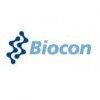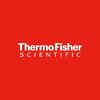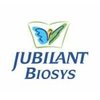Filter interviews by
Biocon Biologics Manufacturing Executive Interview Questions and Answers
9 Interview questions
Flow through collection is a process of continuous sample collection while fraction collection is the process of collecting specific portions of a sample.
Flow through collection involves collecting a continuous stream of sample without interruption
Fraction collection involves collecting specific portions of a sample based on predetermined criteria
Both processes are commonly used in chromatography and other analyti...
Ultrafiltration is a process of separating molecules based on their size using a semipermeable membrane. Diafiltration is a process of washing the separated molecules to remove impurities.
Ultrafiltration is used in industries such as food and beverage, pharmaceuticals, and biotechnology to purify and concentrate solutions.
Diafiltration is commonly used in protein purification to remove salts and other impurities f...
Process flow is the sequence of steps involved in the production of a product or service.
Process flow outlines the steps required to complete a task or project
It helps to identify bottlenecks and areas for improvement
Examples include manufacturing processes, software development, and customer service workflows
CEX Fraction pooling is done based on the desired purity and yield of the final product.
CEX Fraction pooling is a process used in protein purification.
It involves combining multiple fractions from a cation exchange chromatography column.
The fractions are pooled based on the desired purity and yield of the final product.
Factors such as protein concentration, pH, and buffer composition are also considered.
CEX Fracti...
AWFI can be qualified through testing and certification processes.
AWFI can be qualified through third-party testing and certification processes
Testing may include performance, safety, and environmental standards
Certification may be required by regulatory bodies or industry associations
Examples of AWFI certification programs include UL, CE, and ISO
Qualification may also involve audits of manufacturing processes and...
The overall pH and conductivity of the DS depend on the specific DS being referred to.
The pH and conductivity of different DS can vary widely depending on their composition and intended use.
For example, the pH of a cleaning solution DS may be around 10-11, while the pH of a battery electrolyte DS may be around 1-2.
Similarly, the conductivity of a DS used in electronics manufacturing may be very low, while the cond...
The molecular weight of the target protein is unknown.
The molecular weight of a protein is the sum of the atomic weights of all the atoms in the protein molecule.
It is an important parameter for protein purification and characterization.
The molecular weight can be determined using techniques such as mass spectrometry or gel electrophoresis.
Protein binding to resin is a process where proteins are immobilized onto a solid support matrix.
Resin is typically made of a porous material such as agarose or cellulose beads
Proteins bind to the resin through various interactions such as hydrogen bonding, electrostatic interactions, and hydrophobic interactions
This process is commonly used in protein purification and chromatography techniques
The choice of resin ...
Isoelectric point is the pH at which a molecule has no net charge.
It is the pH at which a molecule has equal number of positive and negative charges.
It is also known as the pI.
At the isoelectric point, a molecule will not migrate in an electric field.
It is important in protein purification and separation techniques.
Biocon Biologics Manufacturing Executive Interview Experiences
2 interviews found
I applied via Walk-in and was interviewed before Apr 2022. There were 2 interview rounds.

(10 Questions)
- Q1. Explain process flow
- Ans.
Process flow is the sequence of steps involved in the production of a product or service.
Process flow outlines the steps required to complete a task or project
It helps to identify bottlenecks and areas for improvement
Examples include manufacturing processes, software development, and customer service workflows
- Q2. Principle of protein binding to resin
- Ans.
Protein binding to resin is a process where proteins are immobilized onto a solid support matrix.
Resin is typically made of a porous material such as agarose or cellulose beads
Proteins bind to the resin through various interactions such as hydrogen bonding, electrostatic interactions, and hydrophobic interactions
This process is commonly used in protein purification and chromatography techniques
The choice of resin and b...
- Q3. What is isoelectric point
- Ans.
Isoelectric point is the pH at which a molecule has no net charge.
It is the pH at which a molecule has equal number of positive and negative charges.
It is also known as the pI.
At the isoelectric point, a molecule will not migrate in an electric field.
It is important in protein purification and separation techniques.
- Q4. What is Ultrafiltration and diafiltration
- Ans.
Ultrafiltration is a process of separating molecules based on their size using a semipermeable membrane. Diafiltration is a process of washing the separated molecules to remove impurities.
Ultrafiltration is used in industries such as food and beverage, pharmaceuticals, and biotechnology to purify and concentrate solutions.
Diafiltration is commonly used in protein purification to remove salts and other impurities from t...
- Q5. How do we qualify AWFI
- Ans.
AWFI can be qualified through testing and certification processes.
AWFI can be qualified through third-party testing and certification processes
Testing may include performance, safety, and environmental standards
Certification may be required by regulatory bodies or industry associations
Examples of AWFI certification programs include UL, CE, and ISO
Qualification may also involve audits of manufacturing processes and qual...
- Q6. What is flow through collection and fraction collection
- Ans.
Flow through collection is a process of continuous sample collection while fraction collection is the process of collecting specific portions of a sample.
Flow through collection involves collecting a continuous stream of sample without interruption
Fraction collection involves collecting specific portions of a sample based on predetermined criteria
Both processes are commonly used in chromatography and other analytical t...
- Q7. On what basis CEX Fraction pooling is done
- Ans.
CEX Fraction pooling is done based on the desired purity and yield of the final product.
CEX Fraction pooling is a process used in protein purification.
It involves combining multiple fractions from a cation exchange chromatography column.
The fractions are pooled based on the desired purity and yield of the final product.
Factors such as protein concentration, pH, and buffer composition are also considered.
CEX Fraction po...
- Q8. What is the overall pH and conductivity of the DS
- Ans.
The overall pH and conductivity of the DS depend on the specific DS being referred to.
The pH and conductivity of different DS can vary widely depending on their composition and intended use.
For example, the pH of a cleaning solution DS may be around 10-11, while the pH of a battery electrolyte DS may be around 1-2.
Similarly, the conductivity of a DS used in electronics manufacturing may be very low, while the conductiv...
- Q9. What is the molecular weight of the target protein
- Ans.
The molecular weight of the target protein is unknown.
The molecular weight of a protein is the sum of the atomic weights of all the atoms in the protein molecule.
It is an important parameter for protein purification and characterization.
The molecular weight can be determined using techniques such as mass spectrometry or gel electrophoresis.
- Q10. What is NWP in TFF
- Ans.
NWP stands for Normalized Water Permeability in Tangential Flow Filtration (TFF).
NWP is a measure of the water permeability of a TFF membrane normalized by its surface area and thickness.
It is used to evaluate the performance of TFF membranes in terms of their ability to retain solutes while allowing water to pass through.
Higher NWP values indicate better membrane performance.
NWP is affected by factors such as membrane...
Interview Preparation Tips
- Bioprocess engineering
I applied via Naukri.com and was interviewed in Feb 2021. There were 3 interview rounds.
Interview Questionnaire
1 Question
- Q1. Involving in deviations,current process,how to do column pack,unpack,which parameters abserved during centrifuge,TFF parameters..
Interview Preparation Tips
Top trending discussions






Interview questions from similar companies

I applied via Walk-in and was interviewed in Dec 2019. There was 1 interview round.
Interview Questionnaire
7 Questions
- Q1. Can explain..one.deviation
- Ans.
One deviation refers to a significant departure from a standard or norm, often indicating a need for analysis or corrective action.
Deviation can occur in various contexts, such as finance, quality control, or project management.
For example, in finance, a deviation from budgeted expenses may signal overspending.
In quality control, a deviation from product specifications could indicate a defect.
In project management, a d...
- Q2. Chromatography.. recipe preparation for purification
- Q3. TFF and CFF differences
- Ans.
TFF is a measure of cash generated from operations, while CFF is a measure of cash generated from financing activities.
TFF stands for 'Total Funds From Operations' and measures the cash generated from a company's core business operations.
CFF stands for 'Cash Flow From Financing' and measures the cash generated from financing activities such as issuing stocks or bonds.
TFF is an important metric for evaluating a company'...
- Q4. Change management system
- Q5. Risk assessment..
- Ans.
Risk assessment involves identifying potential risks and evaluating their likelihood and impact.
Identify potential risks and their likelihood of occurring
Evaluate the potential impact of each risk
Develop strategies to mitigate or manage identified risks
Regularly review and update risk assessments
Examples: financial risk assessment, cybersecurity risk assessment
- Q6. Column packing and unpacking
- Q7. Akta process. Systems
Interview Preparation Tips
Skills evaluated in this interview

Manufacturing Executive Interview Questions & Answers
Serum Institute of Indiaposted on 29 Jul 2021
I applied via Referral and was interviewed in Jan 2021. There were 3 interview rounds.
Interview Questionnaire
2 Questions
- Q1. 1.Tell me about yourself?
- Q2. Just explain him about yourself from date of birth till current date in short. It will include all about your native, parents background,academic,last organization etc.
Interview Preparation Tips

I applied via Naukri.com and was interviewed in Feb 2021. There were 4 interview rounds.
Interview Questionnaire
4 Questions
- Q1. Environment compliance related
- Q2. ZLD operating
- Q3. Environment lab analysis
- Q4. General safety rules
Interview Preparation Tips

I applied via Recruitment Consulltant and was interviewed in Mar 2022. There were 2 interview rounds.
Interview Questionnaire
1 Question
- Q1. Online NVPC MONITORING, QUALIFICATIONS, QMS


(1 Question)
- Q1. Tell me about yourself.
Interview Preparation Tips

Senior Executive Interview Questions & Answers
Bharat Biotech Internationalposted on 18 Oct 2024
(4 Questions)
- Q1. What is thee fill volume formula ?
- Ans.
The fill volume formula calculates the volume of liquid or gas that can be held in a container.
The fill volume formula is typically calculated by multiplying the area of the base of the container by its height.
For example, the fill volume of a cylindrical tank can be calculated using the formula V = πr^2h, where r is the radius of the base and h is the height of the tank.
Different shapes of containers will have differe...
- Q2. Difference between dynamic and static pass box ?
- Ans.
Dynamic pass box allows for continuous transfer of materials while static pass box requires manual transfer.
Dynamic pass box has a conveyor belt for continuous transfer of materials.
Static pass box requires manual transfer of materials.
Dynamic pass box is more efficient for high volume transfer.
Static pass box is suitable for low volume transfer or when contamination risk is high.
Examples: Pharmaceutical industry uses ...
- Q3. How we classified Clean Room Areas ?
- Ans.
Clean room areas are classified based on the level of cleanliness required for the specific activities performed within them.
Clean room areas are classified using ISO standards, with Class 1 being the cleanest and Class 9 being the least clean.
The classification is based on the maximum allowable concentration of particles per cubic meter of air.
Examples of clean room areas include semiconductor manufacturing facilities...
- Q4. What is BIO-SAFETY CABINET ?

Senior Executive Interview Questions & Answers
Bharat Biotech Internationalposted on 24 Mar 2024
I appeared for an interview before Mar 2023.
(2 Questions)
- Q1. Vaccine manufacturing
- Q2. Yourself about and planning batch
Interview Preparation Tips


(1 Question)
- Q1. General questions like salary and work experience etc
(3 Questions)
- Q1. Question regarding desired position
- Q2. Question regarding Gst
- Q3. MIRO, Budget etc
Cognitive test and questions
(1 Question)
- Q1. Finalise salary and notice period
Biocon Biologics Interview FAQs
Tell us how to improve this page.
Biocon Biologics Interviews By Designations
- Biocon Biologics Senior Executive Interview Questions
- Biocon Biologics Executive Interview Questions
- Biocon Biologics Assistant Manager Interview Questions
- Biocon Biologics Deputy Manager Interview Questions
- Biocon Biologics Internship Trainee Interview Questions
- Biocon Biologics Scientist Interview Questions
- Biocon Biologics Territory Business Manager Interview Questions
- Biocon Biologics Quality Assurance/Quality Control Manager Interview Questions
- Show more
Interview Questions for Popular Designations
Overall Interview Experience Rating
based on 1 interview experience
Difficulty level
Duration
Interview Questions from Similar Companies
Biocon Biologics Manufacturing Executive Reviews and Ratings
based on 3 reviews
Rating in categories
|
Senior Executive
824
salaries
| ₹4.8 L/yr - ₹9.8 L/yr |
|
Executive
784
salaries
| ₹3.3 L/yr - ₹7.2 L/yr |
|
Assistant Manager
546
salaries
| ₹8 L/yr - ₹13 L/yr |
|
Deputy Manager
311
salaries
| ₹10.4 L/yr - ₹17.6 L/yr |
|
Associate Manager
177
salaries
| ₹14.1 L/yr - ₹24.8 L/yr |

Biocon Limited

Thermo Fisher Scientific

Panacea Biotec

LifeCell International
- Home >
- Interviews >
- Biocon Biologics Interview Questions













